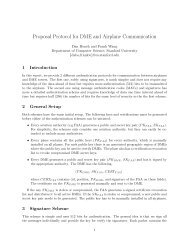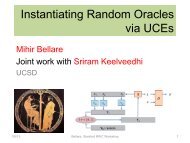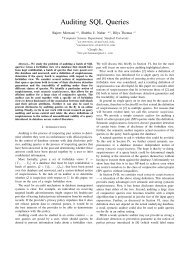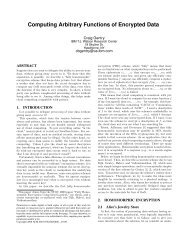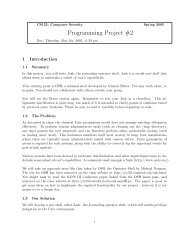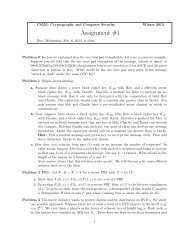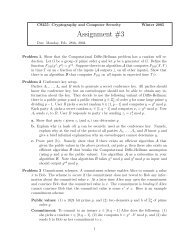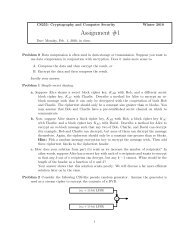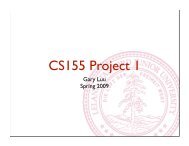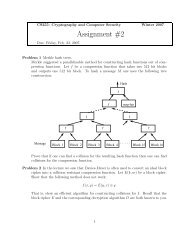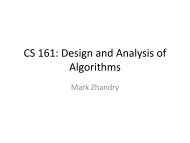PBC Library Manual 0.5.11 - Stanford Crypto Group
PBC Library Manual 0.5.11 - Stanford Crypto Group
PBC Library Manual 0.5.11 - Stanford Crypto Group
You also want an ePaper? Increase the reach of your titles
YUMPU automatically turns print PDFs into web optimized ePapers that Google loves.
4.4. Element arithmetic<br />
Chapter 4. Element functions<br />
Unless otherwise stated, all element_t arguments to these functions must have been initialized to be<br />
from the same algebraic structure. When one of these functions expects its arguments to be from<br />
particular algebraic structures, this is reflected in the name of the function.<br />
The addition and multiplication functions perform addition and multiplication operations in rings and<br />
fields. For groups of points on an ellitpic curve, such as the G1 and G2 groups associated with pairings,<br />
both addition and multiplication represent the group operation (and similarly both 0 and 1 represent the<br />
identity element). It is recommended that programs choose and one convention and stick with it to avoid<br />
confusion.<br />
In contrast, the GT group is currently implemented as a subgroup of a finite field, so only multiplicative<br />
operations should be used for GT.<br />
void element_add(element_t n, element_t a, element_t b)<br />
Set n to a + b.<br />
void element_sub(element_t n, element_t a, element_t b)<br />
Set n to a - b.<br />
void element_mul(element_t n, element_t a, element_t b)<br />
Set n = a b.<br />
void element_mul_mpz(element_t n, element_t a, mpz_t z)<br />
void element_mul_si(element_t n, element_t a, signed long int z)<br />
Set n = a z, that is a + a + . . . + a where there are z a’s.<br />
void element_mul_zn(element_t c, element_t a, element_t z)<br />
15



